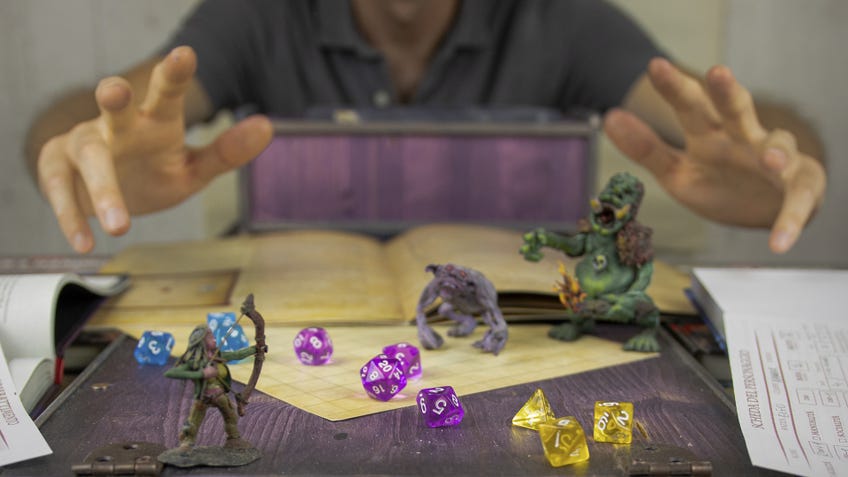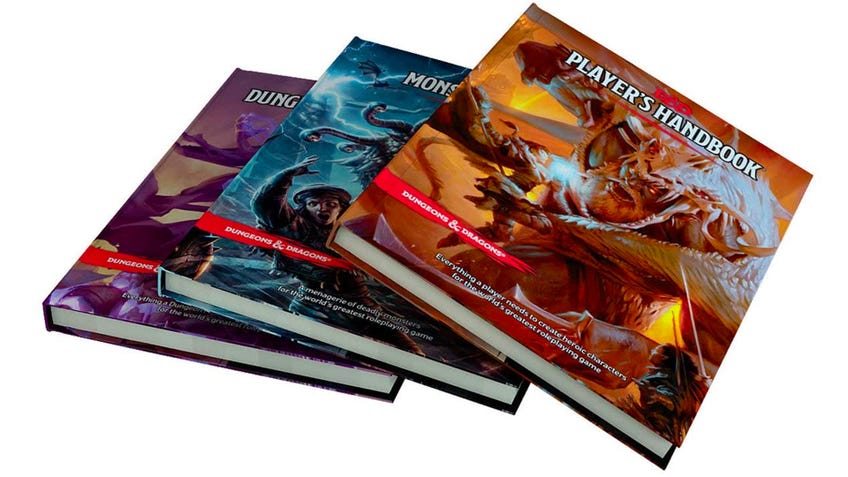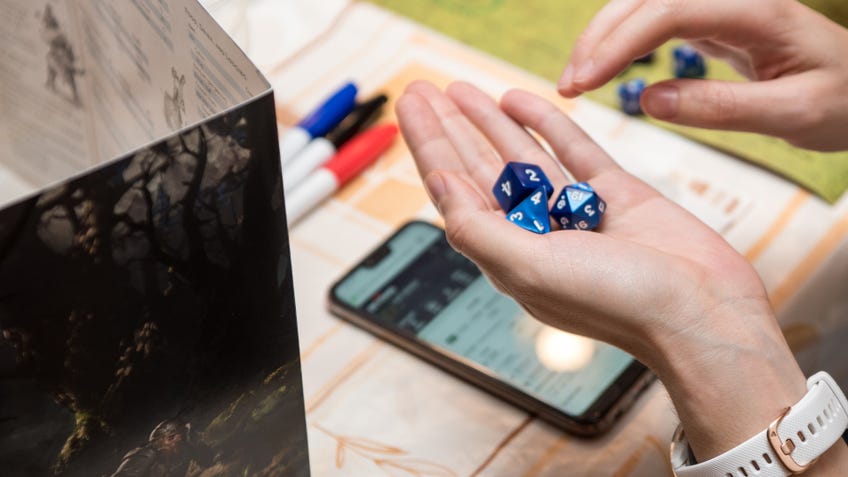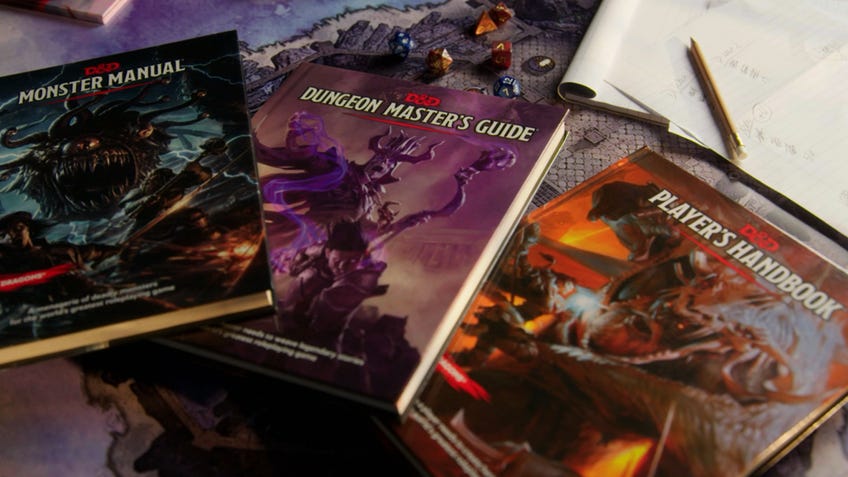One D&D's new Dungeon Master’s Guide could fix 5E's biggest problem
The new Dungeon Master’s Guide is getting a big reset.
The Dungeon Master’s Guide is a core resource for anyone thinking of running a game of Dungeons & Dragons. Often overlooked by casual players, who make do with the Player’s Handbook alone, the DMG is meant to be a springboard for those who actually run the games – giving them the omniscient overview needed to assert D&D’s rules, make hazier judgment calls and ensure a smooth storytelling experience for all involved.
That isn’t always the reality, though. The 5E iteration of the DMG is infamous for being hard to navigate, and the game’s designers are tackling this with a big restructure of the sourcebook for when the new One D&D revision launches in 2024 – which they recently covered in a 24-minute video hinting at the changes to come.
One D&D is still in the midst of playtesting, meaning that any specific changes are still in flux. But the video – featuring D&D’s games design architect Chris Perkins and senior content consultant Todd Kenreck – charts the general direction of the new DMG, and it’s enough to make us hopeful that things are looking up for prospective dungeon masters in the years ahead.
D&D’s explosive popularity over the past few decades speaks to the engaging nature of its combat and roleplay mechanics, but it’s no secret that DMs can be hard to come by. With all the extra work, responsibility, world creation and rules memorisation that goes into running a game, the prospect can be intimidating for new, or even seasoned, players.
The Dungeon Master's Guide should be a tome that helps to make your journey into D&D easier, but it can be indecipherable to those not familiar with its rules.
The DMG should be a tome that helps to make this journey easier, but it can be indecipherable to those not familiar with its rules – throwing you right into the middle of campaign building, and the kinds of governments and gods that make up the wider world.
To someone who hasn’t bought their first set of dice, it’s a little intimidating – and cements the idea that running a game of D&D is best left to the Critical Role and Dimension 20 professionals, rather than you and your local coterie of amateur adventurers.

Without DMs, of course, there is no game, and the result is a small coterie of ‘forever DMs’ burdened with running games for those who don’t have the inclination to do so – a DM bottleneck which just limits the size of the player base overall.
Thankfully, that looks set to change. Chris Perkins, who also worked on the 2014 editions of the core rulebooks, says that the new DMG will be structured around “the natural order of information that new DMs need” and offer “a better user experience” that makes it easier for players to shift into the dungeon master’s seat.
Opening chapters will now deal with the basics of using dice, getting friends around the table, and what a tabletop RPG experience that mixes combat, exploration and roleplay will actually feel like at the time – including the most common issues DMs come up against, such as when players start moving off-piste from the story you’ve laid out for them.

The notion of a pre-game “session zero”, to set expectations and comfort levels for your players, has become increasingly popular in tabletop roleplaying spaces, and made a formal appearance in 5E sourcebook Tasha’s Cauldron of Everything – so it’s good to hear that it’ll be absorbed fully into the DMG itself. DMs need tools for table management as much as they do tools for planning encounters, after all.
DMs need tools for table management as much as they do tools for planning encounters.
More large-scale considerations such as adventure building, campaign building and the fantastical cosmology underpinning it all come in later chapters, after the book has actually taught you how to play the game.
This makes sense to me – the main barrier to a DM running a game is not the difficulty of picking a god of war, or the specifics of a monarchy your players are destined to overthrow, but rather the mundane necessities of scheduling, sending character sheets, allowing improvised moments to funnel into the plot and generally getting everyone on the same page for a story to collectively be told.
Another common criticism of the Dungeon Master’s Guide is how hard it is to find specific pieces of information. Perkins notes that the D&D designers regularly receive feedback akin to “Oh, I didn’t know that was in there!” or “I know that it’s in there, but I have trouble finding it” – the kinds of comments anyone who regularly delves into the DMG will have learnt to heart.
The 5E DMG has rules scattered throughout the book, without any kind of centralised organisation – meaning you’d need the Dungeon Delver feat just to find the specific rules you’re looking for. One D&D is tackling this with a full, alphabetised rules compendium to ensure players can filter through key mechanics and rules in a more intuitive way, “putting the information in places it is more easily found”.
While reorganising what’s already there doesn’t sound like a huge change, if it means newbie DMs can actually find key information - and more importantly feel like the book will help them in their time of need - it could transform the availability of DMs overnight.

With the 10-year anniversary of the 5E Dungeon Master’s Guide coming next year, it’s an apt time to revisit what a DMG means in today’s tabletop RPG landscape – incorporating new insights that have been implemented through additional sourcebooks, and reflecting the way that players actually come to the game. This new vision of a DMG seems all about making the game more accessible off the bat, and ensuring players don’t feel too intimidated to attempt running a game for themselves.
DMs are a key part of D&D’s DNA, and the game’s success has been built on the willingness of DMs over the years to take on that mantle and do the brunt of the work to bring a game to fruition. As Kenreck says, “we need more dungeon masters” - and the blueprint for this upcoming revision seems like a very good step in making sure that happens.


